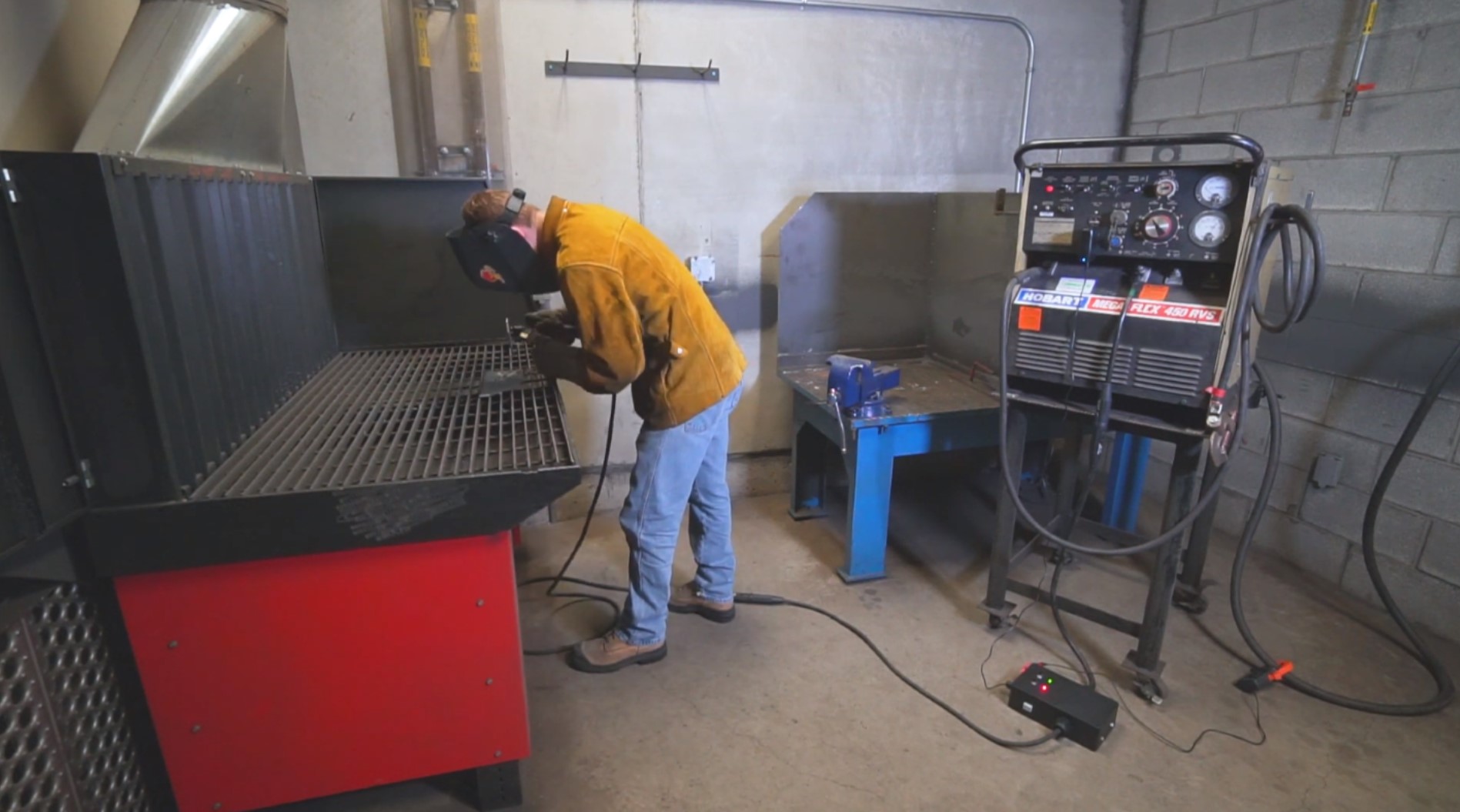An applied research project through Conestoga’s Centre for Smart Manufacturing and Digital Innovation is working to prevent electrocution and serious damage to machinery and electrical networks caused by stray welding currents (SWC).

The SCID, attached to the electrode lead and the machine’s primary supply cord, will help prevent serious damage to equipment and electrical systems, as well as serious accidents.
Under the direction of Jim Galloway, a faculty member in the college’s Welding Engineering Technology program, a team of Conestoga students, graduates and faculty have developed a prototype called a Stray Current Interrupter Device (SCID) to detect and arrest SWC on welding applications, particularly, arc welding machines. The multi-disciplinary collaboration with faculty from the electrical and electronics program areas led by Dr. Imam (Bobby) Al-Wazedi, a professor in the Power Systems Engineering program, has been instrumental in the success of the project to date.
“A stray welding current is a fault condition where the current goes through unintended conductors and back to the return terminal of the machine,” said Galloway. “If given an opportunity, welding current will deviate from the intended pathway and satisfy the circuit by returning to the terminal however it can. Sometimes it will find multiple pathways, other times there might be only one incorrect route, and often these pathways are back through a facility’s electrical network. It’s surprisingly easy to establish — one simple error by a welder or a relatively minor problem with the equipment can cause a stray current.”
Arc welding uses electricity to join metal to metal by creating enough heat to melt and fuse the material after it cools. Machines are designed to provide alternating or direct current for industrial, commercial, residential or hobbyist applications. SWC faults can occur with simple setup errors or minor system faults, introducing the current into building structures, electrical networks and machinery.
According to Galloway, the only measure currently available to prevent damaging SWC is to follow best practices to ensure welding cables are properly sized, cable insulation is sound, and a return current clamp is placed as close as possible to the point of welding. Failing to prevent SWC can lead to serious and expensive damage to equipment and electrical systems, including fires and explosions, as well as serious accidents, including electrocution.
The SCID is meant to prevent stray current damage from arc welding machines with this fault condition. A control module is added to the welding electrode lead and a sensor is clamped over the machine’s primary supply cord. If there is a problem, the SCID unit will instantly interrupt the SWC and sound an alarm. Once the setup error is corrected, the SCID can be reset and the welder can continue safely.
The research project was sponsored in partnership with EnerDynamic Systems Inc. in Brantford, who plan to use the patent-pending device for industrial arc welding applications. Phase one of the project was completed in 2018 with a prototype developed for any arc welding machine — phase two, working towards developing a smaller version of the device, is currently underway with hopes of wrapping up in early 2020.
Galloway, who volunteers as a technical member on several Canadian Standards Association (CSA) committees, says the research was inspired in part by Conestoga graduate Kelly Dokis. A Welding Engineering Technician program and Welding/Fitting Apprenticeship program graduate, Dokis was killed at work in 2001 as a result of electrical systems damage caused by stray welding current. In trying to better understand what happened, Galloway joined the CSA 117.2 Welding Safety committee and has subsequently led an effort to educate the industry on the issue. The latest CSA 117.2 edition was released in 2019 with changes to electrical safety to prevent electrocutions.
Videos explaining SWC and the damage that can be caused, as well as showcasing the SCID, can be viewed on the college’s YouTube channel.
The college works in collaboration with industry, community and government partners to deliver innovative solutions to address real-world challenges. Conestoga is ranked among Canada’s top tier of research colleges, supporting the needs of industry and community partners while providing students with opportunities to build real-world skills. Visit Conestoga Applied Research and Innovation for more information.
